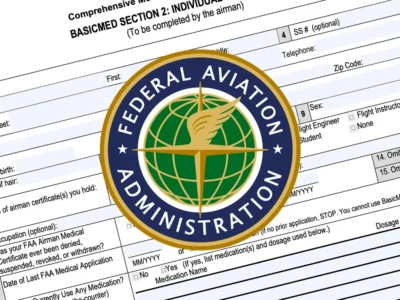The landscape of general aviation is set to broaden its horizons thanks to the recent updates to the BasicMed program enacted by the FAA Reauthorization Act of 2024. These changes are not just incremental; they represent a significant shift in accessibility and operational flexibility for pilots across the United States.
What is BasicMed?

Introduced in 2017, BasicMed was designed to simplify the medical certification process, allowing pilots to fly without the traditional FAA medical certificate if they met certain criteria. This initiative was a game-changer, especially for those pilots for whom obtaining a medical certificate posed a challenge due to health or bureaucratic reasons. Under BasicMed, pilots could operate private aircraft up to certain limits, ensuring both safety and health standards were maintained.
The Changes Brought by the Reauthorization Act
The 2024 FAA Reauthorization Act has brought pivotal updates to BasicMed:
- Increased Passenger Capacity: Pilots can now carry up to six passengers, up from the previous limit of five. This means aircraft can have a total of seven occupants, including the pilot, expanding the utility of personal and small business aviation.
- Expanded Aircraft Limits: Perhaps one of the most impactful changes, the maximum allowable takeoff weight for aircraft under BasicMed has been raised from 6,000 pounds to 12,500 pounds. This adjustment opens up a broader range of aircraft types to pilots, particularly those looking to fly heavier single-engine or light twin-engine planes, excluding transport category helicopters.
- Examiners and Flight Checks: The Act now allows designated pilot examiners (DPEs) to administer practical tests or proficiency checks under BasicMed, provided the examiner meets the medical eligibility requirements. This change could streamline the process for new and returning pilots, making certification and recertification more accessible.
Implications for Pilots and General Aviation
These updates are poised to have several positive implications:
- Greater Accessibility: By allowing pilots to fly larger aircraft and carry more passengers, BasicMed now caters to a wider demographic. This could lead to an increase in private flying for leisure, family travel, or small-scale commercial activities like flight instruction or aerial photography without the need for a traditional medical certificate.
- Economic Benefits: The expansion of BasicMed might stimulate the economy of general aviation by encouraging more people to enter or return to flying. Aircraft manufacturers, flight schools, and related services could see growth as more individuals find flying more feasible under the new rules.
- Safety and Compliance: Despite the expansion, the FAA has maintained stringent health checks and requirements. Pilots must still have held an FAA medical certificate after July 14, 2006, complete an online medical education course, and have their health assessed by a state-licensed physician every 48 months. The safety record of BasicMed pilots has consistently shown no significant difference from those with traditional medical certificates, adding confidence to these expanded capabilities.
The Future of General Aviation
The updates to BasicMed are a testament to the evolving nature of aviation regulation, aiming to balance safety with accessibility. General aviation community leaders have welcomed these changes, seeing them as a step towards making flying more inclusive and less restrictive. However, pilots are reminded that while these updates open new doors, the core tenets of safe piloting remain paramount.
Conclusion
The 2024 FAA Reauthorization Act’s updates to BasicMed are more than just regulatory adjustments; they are a clear signal of the FAA’s commitment to fostering an environment where aviation can thrive safely and inclusively. For pilots and aviation enthusiasts, these changes herald a new era of opportunity, where the skies are not just for the few but increasingly for the many, inviting more individuals to take to the air with confidence and ease.
These changes underscore the FAA’s ongoing efforts to adapt to the needs of the aviation community while ensuring that safety remains at the forefront of all policy decisions.
